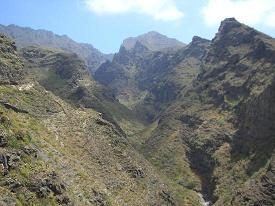 The term mycelium is part of the specialized terminology of mycology, the science that studies the kingdom of fungi, also known as the fungi kingdom. When we talk about fungi, it should be remembered that a fungus is the whole of a plant, while a mushroom is only the reproductive system of the fungus and the visible part of it. The invisible part is underground and is the mycelium.
The term mycelium is part of the specialized terminology of mycology, the science that studies the kingdom of fungi, also known as the fungi kingdom. When we talk about fungi, it should be remembered that a fungus is the whole of a plant, while a mushroom is only the reproductive system of the fungus and the visible part of it. The invisible part is underground and is the mycelium.
The mycelium is formed by filaments or hyphae, the set of these hyphae being the mycelium. The mycelium is the vegetative apparatus of the plant and, consequently, it is actually what makes the fungus grow, reproduce and die.
The life cycle
The life cycle of a fungus begins with the birth of the mycelium by detaching and germinating the spore (which has previously detached from the mushroom). At one end of the spore a fissure opens through which long white tubes develop, which are the primary mycelia of a sign. Later, the primary mycelia unite with other equal ones of opposite sign to produce new fungi that perpetuate the species. Thus, from the union of two primary mycelia of different signs, secondary mycelia are formed, which are thicker and give rise to the birth of mushrooms.
The primary and secondary mycelia are formed by the hyphae and the set of hyphae create the mycelium in its entirety.
Mycelium Considerations
Mycelia's structure is considered by mycologists to resemble the neural complexity of the human brain and, at the same time, has a similarity to internet networks. This means that the mycelium is the invisible tissue that allows fungi to exist. Its ramifications are so complex and extensive that they can be several kilometers long. Its growth speed is also spectacular, as it grows at 1 millimeter per hour.
 Understanding mycelium and fungi in general is essential. In fact, some mushrooms are used as medicines (most antibiotics are made from mushroom cultivation). On the other hand, the quality of the soil depends to a great extent on the organic sustenance provided by the mycelium. Consequently, it is not a simple structure of fungi but it is a fundamental element for the maintenance of ecosystems.
Understanding mycelium and fungi in general is essential. In fact, some mushrooms are used as medicines (most antibiotics are made from mushroom cultivation). On the other hand, the quality of the soil depends to a great extent on the organic sustenance provided by the mycelium. Consequently, it is not a simple structure of fungi but it is a fundamental element for the maintenance of ecosystems.
In agriculture and forestry, mycelium is used as a natural filter to combat certain polluting elements in the soil. For this reason some mycologists emphasize an idea: mushrooms can play a leading role in preserving nature.
Photos: iStock - Usere6035d91_515 / kasto80









